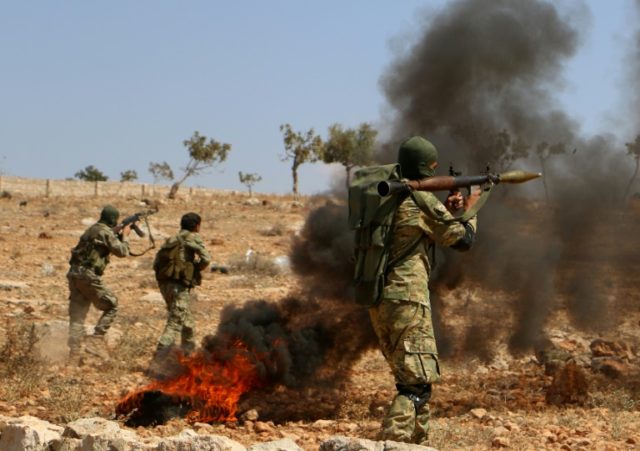The U.S.-led coalition and its local allies, namely the Kurdish-led Syrian Democratic Forces (SDF), are closing in on “the last group of remaining [Islamic State] fighters in Syria,” a spokesman for the alliance told Pentagon reporters on Tuesday.
His comments came on the same day that the Institute for the Study of War (ISW) warned that ISIS is regrouping to mount a “second resurgence” in Iraq and Syria.
Although the U.S.-led coalition and its local partners have decimated ISIS’s physical caliphate in the Middle East, the Trump administration has acknowledged that the jihadist group still controls pockets of territory mainly in Syria and remains a menace.
On Tuesday, Col. Sean Ryan, a spokesman for the U.S.-led coalition fighting ISIS, told reporters that, in Iraq, alliance-assisted local forces are “pursuing ISIS remnants in the few spaces” the terrorist group “offers some resistance — where ISIS has hidden tunnels, weapons caches, and explosive stockpiles.”
The fight continues against the jihadist group in Syria, noted Col. Ryan, adding:
As ISIS retreats, they’re employing improvised explosive devices along routes and booby-trapping houses to inflict casualties as the SDF fighters clear through the terrain…As the SDF’s advancement begins to put greater pressure on the last pocket of ISIS resistance, the SDF continues to successfully capture enemy fighters attempting to flee the battlefield.These tactics clearly demonstrate the growing desperation of ISIS as the SDF slowly closes in on the last group of remaining fighters in Syria.
The SDF is a Kurdish-Arab alliance led by the People’s Protection Units (YPG), the armed wing of the Democratic Union Party (PYD) that controls most of northern Syria. Kurdish YPG fighters also make up the majority of SDF fighters.
In a report issued Tuesday, the Institute for the Study of War warned that ISIS “is reconstituting a capable insurgent force in Iraq and Syria despite efforts to prevent its recovery by the U.S. Anti-ISIS Coalition.”
“ISIS is waging an effective campaign to reestablish durable support zones while raising funds and rebuilding command-and-control over its remnant forces,” it added. “On its current trajectory, ISIS could regain sufficient strength to mount a renewed insurgency that once again threatens to overmatch local security forces in both Iraq and Syria.”
An ISW map depicting ISIS’s current operating areas as of the beginning of this month shows that there are support zones for the terrorist group in various regions across Iraq and Syria, mainly in and around the border between the two nations.
“It’s important to remember that a military defeat requires the sustainable security structure to prevent the return of groups like ISIS,” Ryan declared, adding that the U.S.-led coalition is “training internal security forces to protect liberated areas and thwart ISIS attempts at reemergence.”
“To date, the coalition has trained approximately 400 SDF members and other internal security forces…In just the past month alone, the Raqqa Security Forces destroyed 500 deadly projectiles,” he also said.
According to Ryan, between 1,000 and 2,000 ISIS jihadis remain in the Middle Euphrates River Valley.
He revealed that the SDF had captured more than 700 fleeing ISIS terrorists.
Referring to America’s long-term commitment to the fight against ISIS, the military spokesman proclaimed, “I can tell you that I go off what the [secretary of defense] says and he has three things that he’s mentioned. First and foremost is to destroy ISIS. The second is to train local troops to eventually take over. And then for the Geneva process to start working.”
The Geneva process refers to peace negotiations to end the Syrian civil war expected to take place in Geneva, Switzerland.

COMMENTS
Please let us know if you're having issues with commenting.